UPSC GS 1
Goddess Shailputri
- News: The Prime Minister, Shri Narendra Modi has prayed to Goddess Shailputri on the first day of Navratri.
- Goddess Shailputri:
-
- Maa Shailputri is the first manifestation of Maa Durga.
- The name ‘Shail’ represents the Himalayas, and as the daughter of Parvataraja Himalaya, Goddess Parvati is revered as Shailputri.
- She is the consort of Lord Shiva, and her vehicle is the bull, Vrishabha. Hence, she is also known as Vrishbharudha.
- She is depicted holding a trident in her right hand and a lotus in her left.
- She is regarded as the protector of all wild animals, symbolising beauty and benevolence.
-
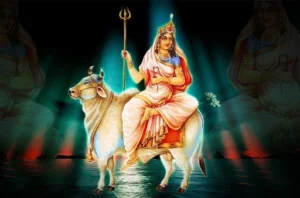
Read also: Overwork in India: Threat to Employee Health & Productivity | UPSC
UPSC GS 2
Dharti Aaba Janjatiya Gram Utkarsh Abhiyan
- News: Prime Minister Narendra Modi recently launched the Dharti Aaba Janjatiya Gram Utkarsh Abhiyan in Jharkhand.
- Definition:
-
- This package was originally coined as the PM Janjatiya Unnat Gram Abhiyan (PM-JUGA).
- It was cleared by the Union Cabinet as an umbrella package to implement existing schemes in 63,000 Scheduled Tribe-majority villages.
-
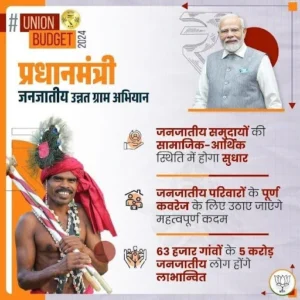
- Aim:
-
- This initiative is aimed at promoting the holistic development of tribal communities across the country.
- The Abhiyan will cover around 63,000 villages benefitting more than 5 crore tribal people in 549 districts and 2,740 blocks across 30 States and UTs.
- It shall attain saturation of critical gaps in social infrastructure, health, education, livelihood, through 25 interventions implemented by various 17 Ministries and Department of Government of India.
-
- Budget and Implementation:
-
- Rs 79,150 crore: (Central Share: Rs.56,333 crore and State Share: Rs. 22,823 crore).
- The program will be implemented over the next five years in collaboration with central and state governments.
-
- Nomenclature:
-
- Dharti Aaba is the name that people in Jharkhand use to refer to Birsa Munda, the anti-colonial tribal leader who built resistance against the British Empire in the late 19th century.
-
- Components of the Scheme:
-
- Tourism and Tribal Homestays:
- The scheme aims to boost tourism by promoting tribal homestays.
- Tribal households will receive ₹5 lakh each to construct new two-room homestays or ₹3 lakh to renovate existing homes.
- The goal is to create 1,000 homestays in villages with significant tourist potential.
-
- Sustainable Farming on Forest Land:
-
- The initiative promotes sustainable farming practices for Forest Rights Act (FRA) patta holders.
- It seeks to ensure the conservation of forest lands while expediting pending FRA claims.
-
- Infrastructure Development:
-
- The scheme will construct 20 lakh pucca homes for tribal families.
- It includes laying 25,000 km of roads to connect ST-majority villages.
- 2.35 lakh households and public institutions will be electrified, and 25 lakh LPG connections will be provided.
- 5,000 tribal villages will receive broadband connectivity through the BharatNet project.
-
- Livelihood and Economic Empowerment:
-
- Fishing support will be provided to 10,000 communities and one lakh individuals.
- Livestock rearing assistance will benefit 8,500 recipients.
- 100 multi-purpose marketing centres will be established to promote economic activities in tribal regions.
-
- Health, Education, and Social Welfare:
-
- The scheme will deploy 1,000 mobile medical units and establish 2,000 new anganwadi centres, with 6,000 centres upgraded.
- 1,000 hostels and 1,000 Poshan Vatikas under the National AYUSH Mission will be set up.
- Ayushman Bharat cards will be provided to all households in tribal-majority villages.
-
- Renewable Energy and Green Initiatives:
-
- Off-grid solar power will be provided to every unelectrified household and public institution.
- The focus is on promoting sustainable energy solutions, ensuring access to clean and renewable energy in tribal areas.
-
- Improve the Gross Enrolment Ratio:
-
- Efforts will be made to improve the Gross Enrolment Ratio in schools and access to quality healthcare for tribal families.
-
Jal Hi AMRIT Programme
- News: The Central Government has introduced the Jal Hi AMRIT scheme in its first 100 days, aiming to promote efficient water management.
- Overview of Jal Hi AMRIT Programme:
-
- The Jal Hi AMRIT Programme has been launched under the AMRUT 2.0 scheme.
- This initiative aims to incentivize States and Union Territories (UTs) to manage used water treatment plants (UWTPs/STPs) efficiently, ensuring the production of good-quality treated water that meets environmental standards on a sustained basis.
-
- Objectives:
-
- The primary goal is to foster competition among cities in managing their sewage treatment facilities.
- It seeks to develop capacities in managing water treatment and to encourage improvements in the quality of treated discharge effluents.
-
- Focus Areas:
-
- The programme places emphasis on capacity building and incentivizing qualitative improvements in the water treatment process.
- Cities are encouraged to produce recyclable water of high quality, meeting stringent environmental standards.
-
- Assessment and Star-Rating System:
-
- A mid-course assessment and water quality testing will be conducted as part of the programme.
- The final evaluation will lead to the awarding of Clean Water Credits, with cities receiving a star-rating between 3 to 5 stars, valid for six months.
-
- Key Facts About AMRUT 2.0 Scheme:
-
- The AMRUT 2.0 scheme was launched for a period of five years, from 2021-22 to 2025-26.
- It aims to provide universal coverage of water supply through functional taps for all households in all statutory towns across the country.
- The scheme also focuses on sewage and septage management, covering 500 cities that were included in the first phase of the AMRUT scheme.
-
- Promoting a Circular Economy of Water:
-
- AMRUT 2.0 promotes a circular economy of water by developing a City Water Balance Plan (CWBP) for each city.
- The scheme focuses on the recycling and reuse of treated sewage, rejuvenation of water bodies, and water conservation efforts.
-
BharatGen
- News: The Central Government has launched BharatGen, an initiative to make generative AI available to citizens in different Indian languages.
- Definition:
-
- BharatGen is an initiative aimed at creating generative AI systems capable of generating high-quality text and multimodal content in various Indian languages.
- It is the first government-supported multimodal large language model initiative in India.
-
- Implementation:
-
- The project is being implemented by IIT Bombay under the National Mission on Interdisciplinary Cyber-Physical Systems (NM-ICPS).
-
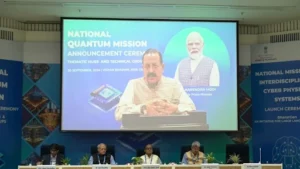
- Features of BharatGen:
-
- BharatGen focuses on multilingual and multimodal foundation models.
- The models are built and trained using Bhartiya (Indian) datasets.
- It aims to develop an open-source platform to foster an ecosystem of generative AI research in India.
- The project is expected to be completed within two years and is designed to benefit government bodies, private sectors, educational institutions, and research organizations.
-
- What is a Multimodal Large Language Model?
-
- A multimodal large language model is designed to process and generate content in multiple formats, such as text, images, and sometimes audio and video.
- These models are trained on large datasets that include text and image data, allowing them to understand the relationships between different modalities.
- They have various applications, including image captioning, visual question answering, and content recommendation systems that use text and image data to provide personalized recommendations.
-
UPSC GS 3
New SEBI Rules
- News: Markets regulator Securities and Exchange Board of India (SEBI) has introduced a stricter framework for futures and options (F&O) trading in an effort to curb losses for retail investors.
- What is Futures and Options?
-
- Futures and options are the major types of stock derivatives trading in a share market.
- Future and options in the share market are contracts which derive their price from an underlying asset (known as underlying), such as shares, stock market indices, commodities, ETFs, etc.
- These are contracts signed by two parties for trading a stock asset at a predetermined price on a later date.
- Futures and options basics provide individuals to reduce future risk with their investment through pre-determined prices.
- However, since a direction of price movements cannot be predicted, it can cause substantial profits or losses if a market prediction is inaccurate.
-
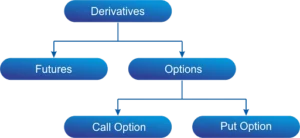
- Contract Size for Index Derivatives Recalibrated:
-
- Minimum contract size increased to Rs 15 lakh (from Rs 5-10 lakh).
- Applicable to new index derivatives contracts introduced after November 20, 2024.
- This move will ensure that only investors with sufficient capital and risk tolerance engage in these high-risk instruments.
-
- Upfront Collection of Options Premium:
-
- Effective February 1, 2025, brokers will be required to collect option premiums upfront.
- This shift is aimed at discouraging excessive intraday leverage among investors and ensuring that they have sufficient collateral to cover their positions.
-
- Rationalisation of Weekly Index Derivatives Products:
-
- Exchanges can offer weekly expiry derivatives only for one benchmark index to curb speculative trading.
-
- Intra-day Monitoring of Position Limits:
-
- From April 1, 2025, stock exchanges will begin intraday monitoring of position limits for equity index derivatives.
- This means that position limits will be checked multiple times throughout the trading day, reducing the risk of traders exceeding permissible limits unnoticed.
-
- Removal of ‘Calendar Spread’ Treatment on Expiry Day:
-
- The long-standing practice of calendar spreads offsetting positions across different expiries will be eliminated for contracts expiring on the same day.
- Calendar spreads allow traders to offset risk between contracts expiring on different dates, reducing margin requirements.
- However, on expiry days, these spreads can lead to substantial basis risk, where contract values fluctuate wildly, making risk management challenging.
- By removing this benefit on expiry day, it will be ensured that traders are adequately covered by margins.
-
- Increase in ‘Tail Risk’ Coverage on Day of Expiry:
-
- To address the high volatility observed on expiry days, Sebi will implement an additional extreme loss margin (ELM) of 2% for all open short options on the day of expiry.
- This measure is intended to protect investors from extreme market fluctuations, particularly during high-volume trading sessions.
-
Swallowtail Butterflies
- News: The overexploitation of 25 species of host plants valued for their medicinal properties has threatened the swallowtail butterflies in the forest habitats of a part of Assam.
- Definition:
-
- Swallowtail butterflies belong to the family Papilionidae (order Lepidoptera).
-
- Appearance:
-
- Named for their characteristic tail-like extensions on the hindwings.
- However, many species are tailless.
-
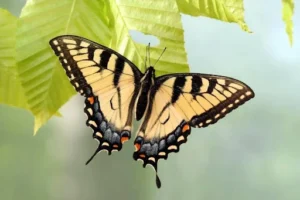
- Distribution:
-
- Swallowtail butterflies (Papilio) are found globally, except in the Arctic regions.
- India hosts 77 out of the 573 known species of swallowtails recorded worldwide.
-
- Mimicry:
-
- Many swallowtail species mimic the coloration and patterns of butterflies that are protected by their unpleasant taste.
-
- Threats to Swallowtail Butterflies:
-
- Illegal cattle farming within protected areas.
- Agriculture and tea cultivation near their habitats.
- Illegal tree felling.
- Pesticide use, which negatively affects their populations.
-
- Ecological Importance of Butterflies:
-
- Butterflies, including swallowtails, serve as key environmental indicators.
- The health of the environment directly influences their presence, abundance, and species diversity.
-
Electrolyte
- News: Researchers have developed a solid electrolyte that could be a suitable material for all-solid-state batteries.
- What Are Electrolytes?
-
- Electrolytes are minerals that carry an electrical charge when dissolved in fluids like blood and urine.
-

- Types of Electrolytes:
-
- The most common electrolytes include acids, bases, and salts.
- When dissolved in solvents like water or alcohol, they ionize and conduct electricity.
- Some salts, such as sodium chloride, function as electrolytes when melted without a solvent.
- Certain compounds, like silver iodide, can act as electrolytes even in solid form.
-
- Sources of Electrolytes:
-
- The body produces electrolytes naturally.
- These minerals are also obtained through food, drinks, and supplements.
-
- Role of Electrolytes in the Body:
-
- Electrolytes are found in blood, tissues, urine, and other body fluids.
- They are essential for balancing body fluids, regulating heart rhythm, and supporting nerve and muscle function.
-
- Electrolyte Imbalance:
-
- An imbalance occurs when there is too much or too little of specific electrolytes in the body.
- This may indicate an underlying condition, such as kidney disease.
-
- Electrolyte Panel:
-
- An electrolyte panel is a blood test used to measure electrolyte levels in the body.
-
Read also: One Nation One Election: Impact on Indian Democracy | UPSC
Mudumalai Tiger Reserve
- News: A survey of herpetofauna – reptiles and amphibians – within the Mudumalai Tiger Reserve (MTR), led to the identification of 33 reptiles and 36 amphibians that were recorded from the region for the first time.
- Location of Mudumalai Tiger Reserve:
-
- Mudumalai Tiger Reserve is situated in the Nilgiris District of Tamil Nadu, at the tri-junction of three states: Karnataka, Kerala, and Tamil Nadu.
- The reserve shares its western boundary with Wayanad Wildlife Sanctuary (Kerala) and its northern boundary with Bandipur Tiger Reserve (Karnataka).
- The name “Mudumalai” translates to “ancient hill range,” as the area dates back approximately 65 million years, coinciding with the formation of the Western Ghats.
- The Theppakadu elephant camp, located within the reserve, is a popular tourist attraction.
-
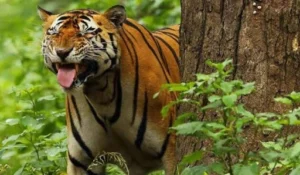
- Vegetation and Habitats:
-
- Mudumalai Tiger Reserve features a wide variety of habitats, including tropical evergreen forests, moist deciduous forests, moist teak forests, dry teak forests, secondary grasslands, and swamps.
-
- Flora of Mudumalai:
-
- The reserve is home to tall grasses, often referred to as “Elephant Grass.”
- It also has species of giant bamboo and valuable timber trees such as teak and rosewood.
-
- Fauna of Mudumalai:
-
- The reserve hosts a rich diversity of wildlife, including large mammals like elephants, gaur (Indian bison), tigers, and panthers.
- Other notable species include spotted deer, barking deer, wild boar, and porcupines.
-
- Highlights of Recent Survey:
-
- The survey recorded two critically endangered species of amphibians: Micrixalus spelunca (cave dancing frog) and Nyctibatrachus indraneili (Indraneil’s night frog).
- Other endangered amphibian species such as the star-eyed bush frog, Nilgiri bush frog, and Nilgiris wart frog, all endemic to the region, were also found during the survey.
-
ANNA DARPAN
- News: Food Corporation of India has selected Coforge for its digital transformation project, Anna DARPAN.
- About Anna DARPAN Project:
-
- The Anna DARPAN Project aims to streamline and enhance the supply chain management system across various operational levels including Mandis, Mills, Depots etc.
- The system is designed to improve efficiency and productivity by implementing an interactive and user-friendly interface.
- It will enable data-driven decision-making through the use of data analytics, supporting both strategic and operational decisions.
- The system will integrate with both internal and external systems, prioritizing a mobile-first approach to ensure accessibility from any location, at any time.
-

- Role of Coforge:
-
- Coforge is responsible for the end-to-end design, development, implementation, and maintenance of the Anna DARPAN system.
- The project will be built using the latest technology and hosted on a cloud-based platform, ensuring flexibility and scalability.
- The system will utilize a service mesh architecture to enable seamless communication between microservices.
-
- Project Development and Integration:
-
- During the requirement gathering, analysis, and documentation phase, Coforge will gain deep insight into the operations of the Food Corporation of India (FCI).
- This phase will include a thorough understanding of FCI’s requirements, existing process flows, and potential integration opportunities with current FCI-related applications.
-

